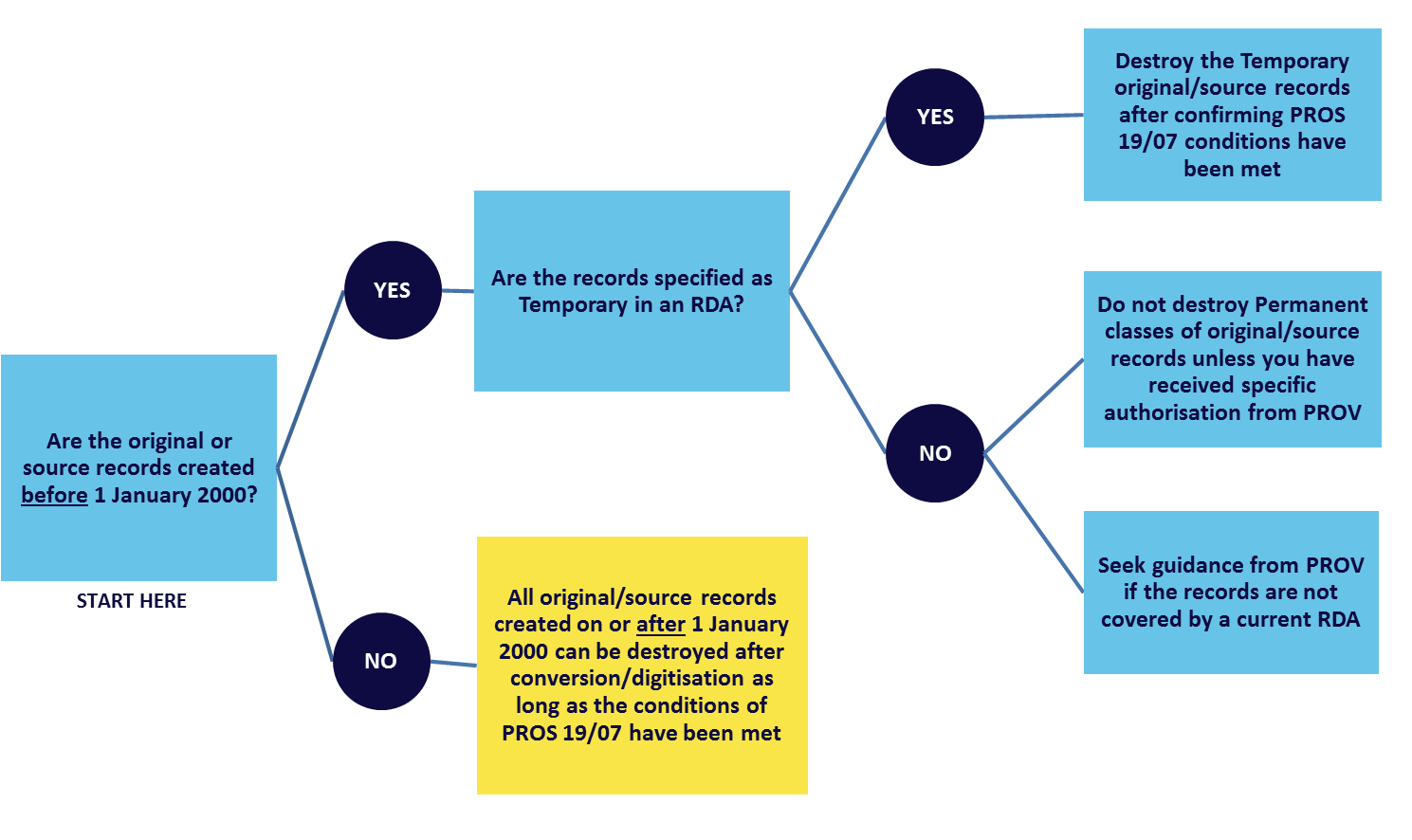What is digitisation?
Digitisation involves the conversion of a physical or analogue record to a digital representation. Digitisation is one means of converting an original or source record and is usually carried out through scanning or photographing the source record.
Benefits and risks
Digitisation can provide considerable benefits for agencies, including:
- Improved productivity and service delivery, as records can be accessed immediately, used by multiple people and become part of monitored workflow processes
- Greater sharing of information and re-use of previous work
- Better decision-making as the full set of contextual and background information can be accessed
- Savings on storage, management and access costs
- Preservation of the organisation’s history
However, agencies should weigh up and carefully consider the intended outcomes of any potential digitisation projects for public records. Digitisation is often an expensive and resource intensive exercise. In some cases transferring records to PROV may be a more strategic action to take on permanent value, hardcopy records.
Digitisation step-by-step
Please follow the below steps to ensure that your agency is meeting PROV digitisation and disposal requirements.

